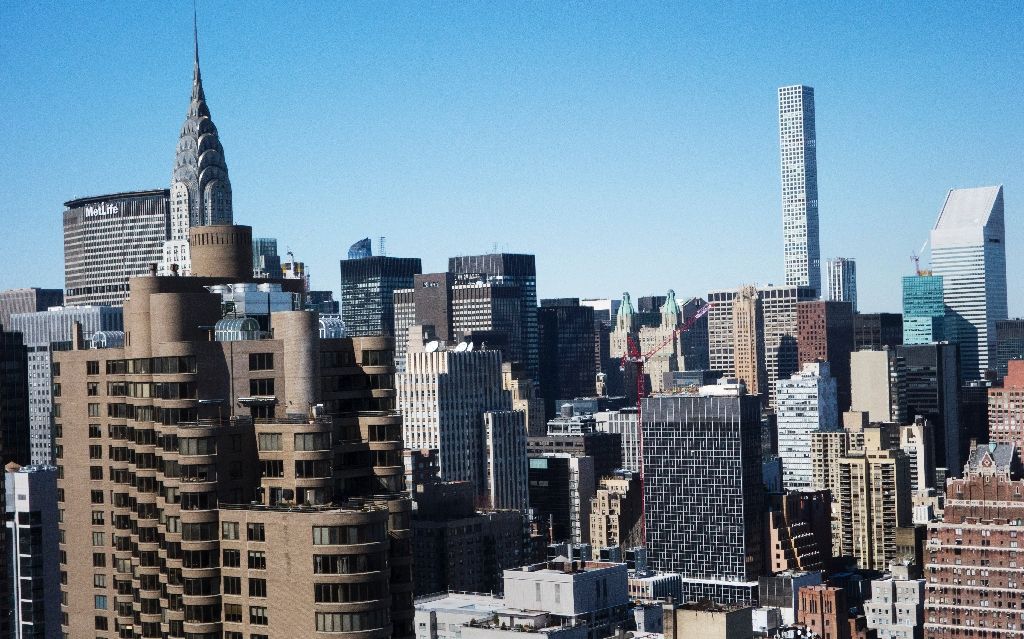
With a skyline crowded with ever-more luxury towers, the construction of another Manhattan skyscraper wouldn't normally be remarkable.
But the American Copper Buildings going up on the East River -- a complex of two towers with 764 apartments, panoramic views and a huge entrance hall with a doorman -- is different.
Planned just after deadly Hurricane Sandy ravaged New York in October 2012 -- sounding another alarm about the mounting effects of climate change -- it was designed with new threats in mind, reflecting how the real estate world is evolving to account for global warming, in contrast to President Donald Trump's moves to roll back environmental protection.
The huge storm killed more than 40 people in New York, paralyzing the US financial capital for days.
JDS, the company developing the American Copper Buildings, bought the land for the project around the same time.
"The whole thing was a lake, we could have toured the site in a canoe," said Simon Koster, a principal at the company.
"We knew something like that would happen again," he added. "So we said, 'How can we make sure that if we lived here, we will not be facing that scenario?' So we let the designers loose."
- Tools to survive -
One of the main innovations was to ensure residents have access to electricity as long as possible in the event of an outage in the city.
Instead of planning an opulent penthouse on the top floor, the architects reserved space for big natural-gas generators designed to keep key equipment functioning if the power fails.
Although the machines are situated "in the most valuable real estate of this building," Koster said, "it makes all the other units all the more valuable."
"We are going to have more of these events, it's just being strategic and smart about how you prepare for them," architect Gregg Pasquarelli said.
"If we lose power, if you can go up and down in the elevator and your refrigerator works and you have one outlet available that you charge your phone on, you can probably survive in New York for a week," he added.
Every kitchen has two electrical outlets -- one reserved for refrigerators -- connected to a back-up circuit fed by the generators. That means smartphones can be charged during a breakdown.
Traditionally relegated to the basement, the heating, ventilation and large electrical equipment have been installed on the first floor instead, more than 20 feet (seven meters) above the street to minimize the risk of flooding.
The main entrance hall is large and austere, with steel pillars and floor tiling designed for outside use.
Wood-paneled walls warm the atmosphere -- but the open side panels can dry easily with no damage in the event of flooding.
The building's cheapest studios will be available for rent starting from $3,000 a month, and include the luxury perks of access to a swimming pool and huge terrace with views of the Empire State Building in addition to the more prosaic bonus of flood resistance.
- Embracing resilience -
New York is embracing resilient architecture more than most cities in the country because its exorbitantly priced real estate drives up the financial stakes, says Alex Wilson, president of the Vermont-based Resilient Design Institute, which specializes in such issues.
Besides electricity, architects are also coming up with ways of providing drinking water -- with accessible faucets for everyone now obligatory on lower floors -- as well as maintaining reasonable temperatures.
In the event of a summer power outage, "a lot of condominiums are heavily glazed and would become inhabitable," Wilson said.
The city is identifying the most vulnerable existing buildings for adaptation.
However, the obstacles for reconstructing older structures are greater than integrating flood resistance during the construction of new projects such as the Copper Buildings -- and so are the costs -- Wilson said.
Politics may also get in the way. The Trump administration plans to slash the Environmental Protection Agency's budget, which may affect the collection of data to assess weak infrastructure.
"If the government stops collecting the data on flooding vulnerabilities, heat waves, then it's going to be harder for the design and development communities to incorporate changes in their design," Wilson said.
Still, he's optimistic the government's rejection of science about the effects of climate change will have only a temporary effect.
"The private sector is well aware of this, the insurance industry is increasingly aware of this and these industries will continue to drive progress in resilience."afp








































